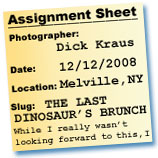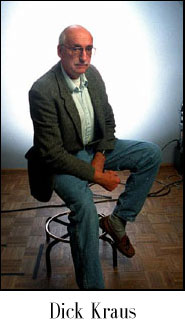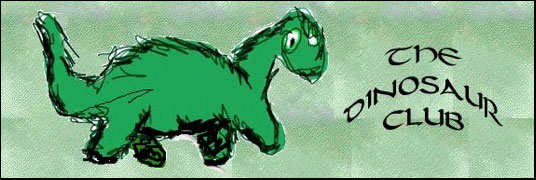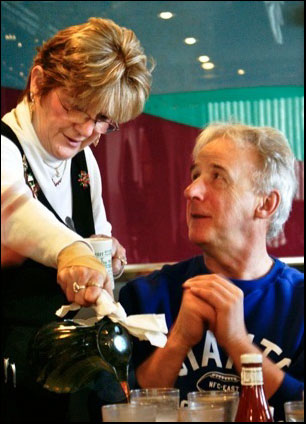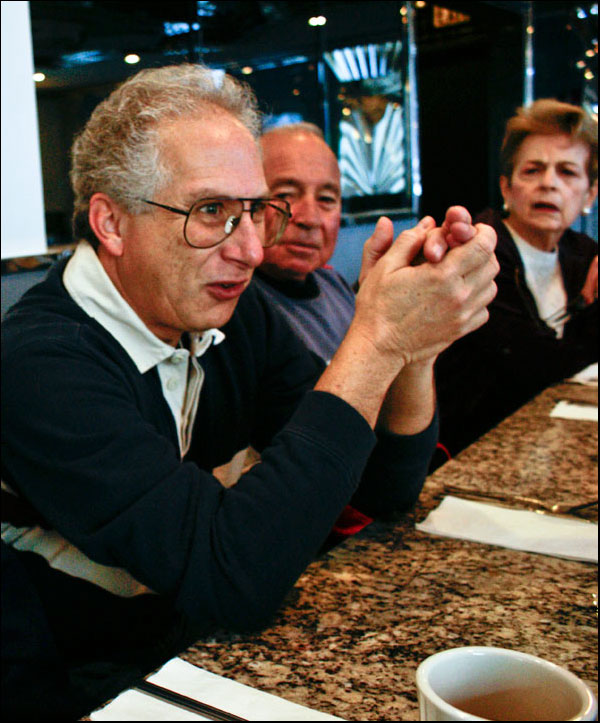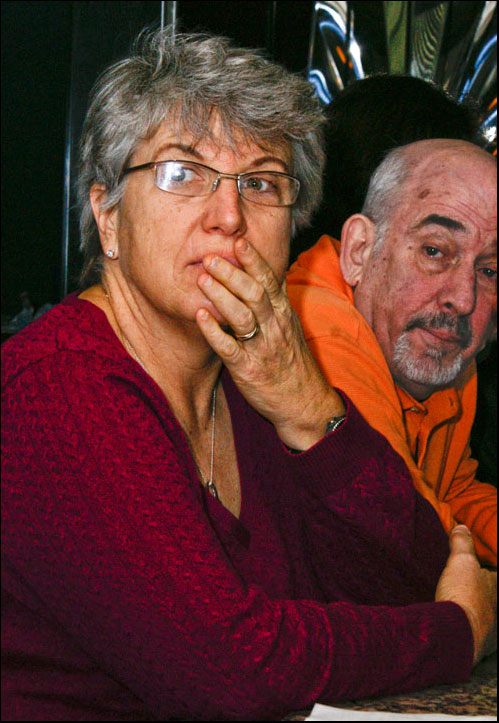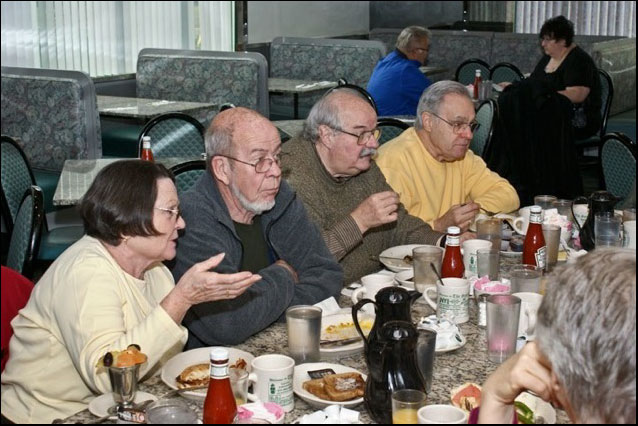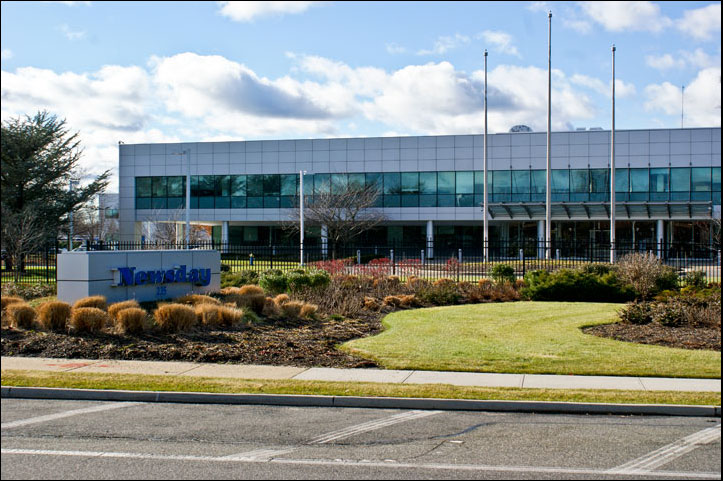|
|
|
|
|
|
THE
LAST DINOSAUR'S BRUNCH While I really wasn't looking forward to this gathering, I didn't want to be late. Knowledgeable people would be there and I desperately wanted to know what was going on. Since the announcement a few days earlier that Newsday was dismantling its Photo Department, rumors had been flying. My e mail in box was filling up with requests to know "What's happening?" I called Dave
Pokress, a senior staff photographer at the paper who was also
a representative of the union that
represented the editorial employees.
I was preparing
an opinion piece
for the December issue of The Digital Journalist and I wanted
to have my facts straight. Dave was nearing retirement
age, but was still employed. He had come
to
Newsday
37 years ago as a Photo Department Intern. He filled me in on
what he knew, which was still sketchy at the time. He told me
that he would have
more information and would fill us in on the latest developments
at the upcoming Dinosaurs' Brunch.
The Dinosaurs
state on their web site: "The
Dinosaur club consists of a group of retired old fossils who
have eaten all the leaves from the
top of the trees. The Dinosaur Club was started in 2002 when a few of us Newsday staff photographers retired, or were close to retirement. Word got out and soon we were inundated with requests from photographers who had retired from several New York City papers and TV stations. And then reporters, editors and darkroom staffers asked to join. What had started out as a handful, quickly grew into a mob. Not everyone made it to our monthly brunch at the local diner. Many had moved to Florida or other warm climes. Some became too aged and ill to make it every month. But, they all checked the web site every month, to see who had attended.
Some of the fired photographers could apply for the new editor openings. It was pointed out that these editors would also have to cover photo assignments a couple of days a week. It was going to be worked out so that everyone who wasn't re-hired could collect unemployment benefits. Dave also
felt that he and about nine other senior photographers weren't
going to be considered for re-employment. It seemed obvious that
top management had no concern about the dedication, loyalty and
length of service involved with these older newspukes. Dave's
opinion was that management felt that these older shooters were
a health insurance risk.
Newsday was self-insured as far as health benefits were concerned.
Older people were more prone to health and injury problems. That
may well be, but it has been my experience that the loyalty and
dedication of the older segment of the paper's work force showed
them coming
in to work on a more regular basis than the younger segment.
Health issues rarely stopped them.
Al Raia had started at Newsday in 1961. He still handled his assignments in a professional manner in spite of being in his mid-70's and is one of the most beloved and respected members of the staff. Although he is certainly eligible for full retirement and Social Security, he loves his job and had planned to continue working for as long as he was able. Dave and Audrey had worked for 20 to 30 years. Dave has about 10 more years before he can collect his full retirement. Audrey has even longer to go. Who would hire them in the meantime? Even if there were photographer's jobs available, it's unlikely that any such positions would be offered to senior photographers.
It was time for us to go. The diner was filling up with the lunch crowd. We stood in the parking lot in small groups, recalling more "remember whens." And then we got into our cars and drove home, with the realization filling our minds, that the journalism that we knew was a thing of the past and would never be again. That is so sad.
I passed the Newsday building on my way home. On a whim, I pulled over and made a photo. Who knows how long that will be there, the way things are going. Next month there will be another Dinosaur's Brunch. There will surely be more discussion of "what's happening." The title of this piece is The Last Dinosaur's Brunch. The title referred to the fact that it was the most recent Dinosaur's Brunch, not that there would be no others. There will be more and now we will have more people able to attend. It's just such a shame that their lives had to be altered so dramatically in order for that to happen. We all could have waited. Dick Kraus
ADDENDUM. Since I wrote the above, several weeks ago, some new facts have come to light. Management has dropped the job title, "Visual Journalist," and two photographers, not three, have been re-hired as Staff Photographers. Audrey Tiernan, mentioned in the story, was one of them. Five former Staff Photographers, all of them senior staffers, were hired as Assistant Photo Editors. The rest of the staff were given buy-outs. blog comments powered by DisqusDick Kraus
|
||||||||||||
